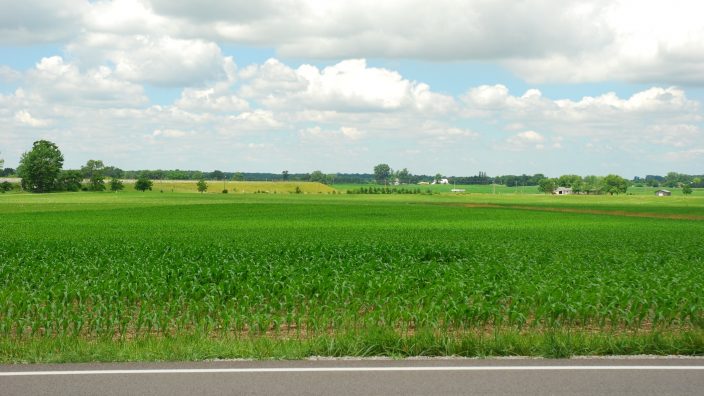Applications for Ohio Farm Bureau Health Plans now available
Members have three ways to apply: contacting a certified agent, calling 833-468-4280 or visiting ohiofarmbureauhealthplans.org.
Read MoreBoth federal and state lawmakers have recently begun to address an issue that continues to plague rural communities — the availability and reliability of broadband connectivity.
“It might sound cliché, but our lives are becoming more dependent on technology,” said Tony Seegers, director of state policy for Ohio Farm Bureau. “With new broadband access comes increased economic and educational opportunities and development. Without it, Ohioans in these unserved and underserved areas will continue to fall behind.”
The Agricultural Broadband Coalition, of which Farm Bureau is a member, applauded bipartisan leaders in the U.S. House and Senate for introducing the Precision Agriculture Connectivity Act of 2018 in late January. The legislation, which is co-sponsored in the U.S. House by Ohio Congressman Bob Latta, will help to facilitate the deployment of broadband internet across rural America. The legislation creates the Task Force for Meeting the Connectivity and Technology Needs of Precision Agriculture in the United States. Within a year, the task force is intended to bring together public and private stakeholders to evaluate current programs affecting broadband internet access on rural land, identify and measure existing gaps in coverage and develop policy recommendations to address that gap.
The Ohio House of Representatives passed Ohio House Bill 281, sponsored by State Rep. Rick Carfagna, in late January. HB 281 has the similar objective of the federal legislation of increased broadband access. That legislation requires the Ohio Department of Development Services to establish the residential broadband expansion program. The goal is to provide grant money to assist with residential broadband service expansion projects in eligible areas, which include a residential area in a municipal corporation or a township that is without access to broadband service and not already in line to receive funds for broadband.
Situations happen where residents want broadband but the broadband provider does a cost/benefit analysis of providing service and determines it would be too costly. This happens in a lot of rural areas, Seegers said. Included in the Ohio legislation is grant money that can help partially fund this broadband funding gap, he said.


Members have three ways to apply: contacting a certified agent, calling 833-468-4280 or visiting ohiofarmbureauhealthplans.org.
Read More

One of the best decisions Shannon and Heather Utter made a few years ago was looking into a Farm Bureau member benefit that has ended up saving them thousands of dollars on their energy bills.
Read More

Ryan Hiser has experienced first-hand the importance of having the opportunity to vote on issues that will affect his family operation and other farmers.
Read More

Bill Patterson, Cy Prettyman and Adele Flynn will continue to serve as officers for Ohio Farm Bureau Federation.
Read More

Delegates discussed many topics impacting agriculture including farmland preservation, local foods, and succession planning.
Read More

Twenty-six farmers govern the state’s largest farm and food organization.
Read More

The 2025 recipients are Fred Cooke (posthumous) of Richland County, Marvin Dietsch of Williams County, Steven Knollman of Hamilton County and Michele Miller (posthumous) of Ottawa County.
Read More

Nathan and Jill Parriman grow seasonal crops, including Christmas trees, pumpkins and cut flowers, providing U-cut experiences that invite customers to engage directly with agriculture.
Read More

The 2025 Distinguished Service Award recipients are Craig Adams, Mike Townsley, and Kellogg Farms, Kurt Farms and Stateler Family Farms.
Read More

Ohio Farm Bureau Treasurer Adele Flynn participated in the meeting, representing Ohio farmers.
Read More